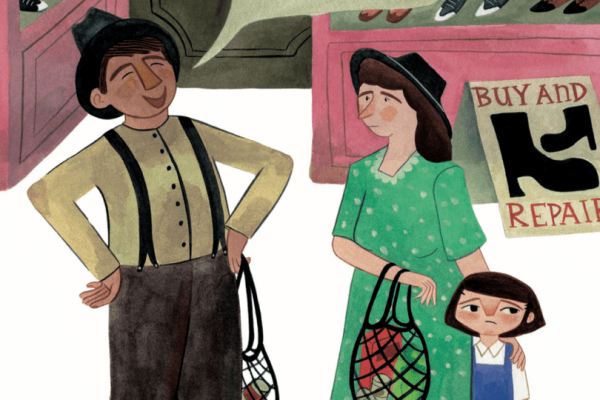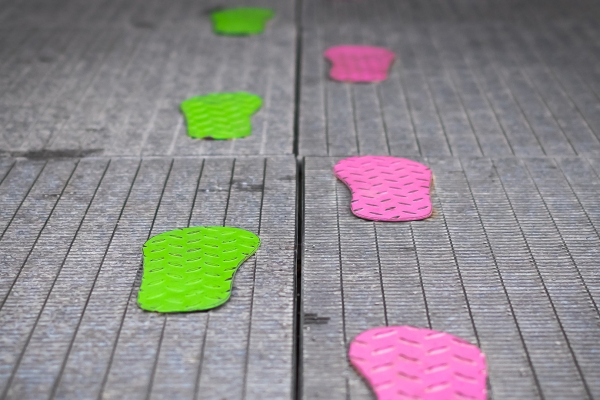A year ago, almost to the day, I began an experiment: quitting sugar.
A friend of mine, Erin, was raving about it, and – skeptical though I was – I knew I couldn’t continue living with the bizarre relationship I had with food. I’m a restrictive eater / binger of old, and every time I thought I’d cracked the formula for eating really well (I’m a great fan of the principles of the HAES movement) I would, sooner rather than later, come to realise that my internal cues about satiety and my visual ideas of portion control were so heartily messed up I didn’t even know where to begin. I’d made a fair amount of progress in getting rid of some of the worst habits, but I still wasn’t in the place I wanted to be. I needed a line in the sand, a way to move along that line towards freedom from the ridiculous deprivation and overindulgence cycles that – at least from what I’ve observed – seem to plague a lot of women in our privileged society.
Where we have ready access to food, we don’t seem to know how to use it without abusing it; plus I work in London, and am lucky to be able to eat out a lot. More to the point, I bloody love food (I’m not sure I can separate it from love) and cooking, feeding people and being fed. Like, I give people who talk about being ‘so full’ after half their ‘delicious’ breakfast some serious side-eye, because I have been a member of the clean plate club since birth. I wanted to enjoy that relationship more without feeling so damn guilty and compulsive about it.
So I thought “what the hell? I can’t make things any worse”. The programme my friend was on was Sarah Wilson’s I Quit Sugar, so I read the books, found most of it made sense (even if some of it was a bit scientifically woolly and made huge assumptions about budget and accessibility) and started out on week one of the plan. The ‘sugar’ in question with IQS is actually fructose, specifically, and I had a lot of questions about this as I’d always been told fruit – most commonly associated with fructose although table sugar is 50% fructose – was ‘good’ sugar, yet always found bananas (supposed to fill you up for hours) left me ravenous, apples gave me acid stomach and my beloved citrus fruit made me nibbly as hell. I dipped into David Gillespie and Robert Lustig and gradually came to believe that ditching the fructose was indeed a good health move. Even after I reintroduced some fruits I kept it fairly low fructose and felt better for that (because contrary to misconceptions you do still eat fruit; I tend towards berries and apricots these days, with the occasional kiwi, apple or pear thrown in).
After the eight weeks were up I found I didn’t really want to stop. And a year later I know I don’t want to, even if it’s not always easy for me. I really believe I’ve made a substantial amount of the progress I’ve been looking for and mostly it’s come as a huge relief. While I won’t pretend that everything is now 100% perfect and I never have weird cravings or madly snacky days, they are considerably fewer and my approach to eating is considerably more free.
The fact is, I live and work in a world full of temptations and quitting sugar has made me feel so much better. Of course, I am not immune to making a less sensible choice in this ongoing experiment. Sometimes it’s worth it, sometimes it’s not. You live and learn. Plus I still have some chronically unhealthy habits (is there an I Quit Crisps programme? Because I really need help. I Quit Sitting Down A Lot would be great too). But on the whole quitting sugar is one of the best decisions I’ve ever made and I have no intention of ever permanently going back on the white stuff.
So, here are some of the things I have experienced in a year of living sugarless (yes, I heard that in my head as ‘Mississippilessly?!’). As with any personal account – just put a bullet in my sugar head if I start calling it a ‘journey’, yes? – your mileage is bound to vary, but I wanted to give a bit of a warts and all, ups and downs perspective with as much balance as I can bring to the discussion. Zealotry and glowing before-and-after testimonials are unconvincing to me; they seem like a wagon you fall off, an infatuation you grow out of. This is going sugar free after the honeymoon, when the toothpaste caps come off and the toilet seat stays up.
Lets start at the lowest point. If you’ve never gone sugar free you’re probably wondering about what happens when you decide that a slice or three of birthday cake never hurt anyone. Well, a little reframing goes a long way. If I thought of every time I had sugar as ‘backsliding’, ‘coming off the wagon’ or ‘being naughty’, I would be no better off than I was before quitting. I’d just be miserably restricted and the vast, vast majority of the time I don’t think about being sugar free at all until someone else points it out. Unless it’s something like an afternoon tea where almost everything is doused in sugar and I want to avoid feeling the effects too much, I don’t make consciously sugar free choices. I just eat stuff that I like and it usually doesn’t contain much sugar because now sugary stuff is not very appealing most of the time.
Once in a while I do splash out and if I think negative thoughts my lovely Erin points out that it’s an experiment. No one is coercing me to do this; on the contrary, a lot of marketing, my friend’s eating habits and the reaction of anyone I talk to about this would suggest the pressure is all going the other way. I continued living sugar free after my initial curious commitment because I felt a lot better. My skin improved. My health measures improved. I felt comfortable with the changes to my body. From now on, I choose whether or not to continue, whether or not to make a different choice, how I want to listen to my body’s and mind’s desires. I’m probably never not going to want ice cream, and I’m comfortable with that; if it’s really good ice cream, or, you know, it’s not but I really feel like it, then I’ll have ice cream. Usually, actually, eating sugary stuff really validates me not wanting to eat it more often since I invariably get headaches, sickness or dizziness (I’m sure some might say psychosomatic, but I’ve sometimes found out after the fact and still felt terrible, so…).
That said, I think it can be helpful to re-quit if something has happened to make it all feel a bit like hard work. Eating out a lot, a special occasion, working long hours, stress, illness (or, in my case, a back op – worry not, I’m totally fixed now), going on holiday or some other general disruption to the eating routine knocks me out for anything from a day or two to several weeks and I find myself making food choices that leave me sluggish, snacking, grumpy and constantly hungry (many of the issues I managed to move away from by doing the programme in the first place). Twice in the past year I had a bit of a ‘reboot’ – a few weeks more strictly, consciously sugar free – to lift myself out of it and feel better.
You’d be forgiven for asking yourself if the programme really works if it’s not a permanent ‘fix’, but – contrary to some of the marketing – the original book was really much more what you’d call guidelines. Also, we live in the real world, and not a lab. As soon as it’s embraced as a specific diet programme, quitting sugar fails in doing the very thing I did it for – being free to make food choices based on what I will enjoy eating, without a cloud of sugar cravings and energy slumps hanging over me. But I can only do it if it’s fun, and positive. If it moved from “I don’t fancy that because it makes me feel a bit crappy / I like that savoury thing better” to “I can’t have that because it’s demonically possessed evilsugar and I promised myself / my friend / Sarah Wilson / the world / God that I wouldn’t”, I’d just give it up as a bad job. That way madness lies.
I have just one diety habit, and it’s one not actually ever mentioned or recommended on the programme. I still habitually track my food intake out of curiosity, but I do not consciously adapt what I eat to suit it. I don’t work to goals in my tracking app, just observe what I’m having. That’s sometimes how I realise there has been a correlation in more disordered eating and feeling rougher. But it’s something I think can easily make quitting sugar turn into a weird competition with yourself, so it’s not actually something I recommend – I just wanted to be totally honest. It’s something that’s become a bit of a habit, and I rather like having data about myself to look back on. Marketer’s occupational hazard, I guess…
I realise all of the above sounds negative, which is weird for a decision that has made me very happy. So here are some of the things being sugar free has done for me.
I cook more, and better. And I’m more creative and less wasteful. Recipes that use up bendy veg, a freezer full of homemade stock after every roast dinner; it’s bloody great. I need to step up my game because I’m still spending way to much on lunch instead of generating more leftovers, but I’m generally moving in a fresh, lovely food direction that is making me fuller and happier without me having to spend any more money (boxed sugary stuff is expensive, man).
I’ve also been introduced to new ingredients that I probably wouldn’t have used. While I’m not a coconut fanatic, and regularly reduce the amount used in recipes, I really enjoy using coconut oil in stir fries and granola (and, erm, on my daughter’s dry skin patches on her face, though not from the same jar). In my everyday eating post I mentioned adding chia seeds to Ready Brek (not very JERF of me, is it?!), and I find them kind of fascinating because they do make quick breakfasts more filling and add a bit of texture. I was already a nut butter fan, but in seeking out sugar and added oil-free versions I’ve become obsessed with crunchy Biona peanut butter (no, I’m not paid to say any of this, yes, I know it’s a legume and not a nut). I’m not a full-on convert to almond milk, but I do love it for chai and in oatmeal.
Weirdly, I now appreciate sweet stuff a lot more, as I really enjoy the tingly tartness of a fresh, ruby raspberry rather than the increasingly sickening taste of, say, cupcake frosting. I never did do much in the way of artificial sweeteners (aspartame doesn’t agree with me and I’m a full fat or go home kinda gal), so I use glucose in the form of rice malt syrup on the few occasions I cannot fathom not adding sweetness (eg to pancakes). I had a splash of maple on holiday and it actually tasted weird to me now as I’ve grown used to my syrup not having a strong taste. Lovely, because maple syrup is lovely, and I definitely enjoyed it, but it’s funny how tastes change.
It’s funny how I’ve changed.
When I look ahead, I find it impossible to imagine a time when I might want to eat large amounts of sugar again. I don’t know that I’d have felt entirely confident saying that at the end of the programme, or even six months ago, because I know that people fall in and out of these patterns in their lives. But right now, a year on, it seems really, really unlikely. And I’m happy with that.
Here’s to another year, and all it has to show for itself.













 In case it’s escaped your notice – between the
In case it’s escaped your notice – between the  First and most important. There is a very comprehensive mixture of types and flavours here, but what I love about it is that most of them are blends of actual ingredients rather than ‘flavoured tea’. Now, I am not averse to the latter – my breakfast blend of choice is T2’s Brisbane Breakfast and one of the Piacha teas that blew me away was the Black and Cherry – but if you’ve ever had a good chai blend (and Piacha has one of those, too) you know that adding actual chunks and pieces of stuff makes a considerably more subtle and delicious tea. There are good numbers of ‘plain’ base teas – black, green, white and oolong – but also fab infusion combinations, such as roiboos spiked with cocoa husks for a comforting chocolatey hit and matcha mint (not my thing, but very, very popular).
First and most important. There is a very comprehensive mixture of types and flavours here, but what I love about it is that most of them are blends of actual ingredients rather than ‘flavoured tea’. Now, I am not averse to the latter – my breakfast blend of choice is T2’s Brisbane Breakfast and one of the Piacha teas that blew me away was the Black and Cherry – but if you’ve ever had a good chai blend (and Piacha has one of those, too) you know that adding actual chunks and pieces of stuff makes a considerably more subtle and delicious tea. There are good numbers of ‘plain’ base teas – black, green, white and oolong – but also fab infusion combinations, such as roiboos spiked with cocoa husks for a comforting chocolatey hit and matcha mint (not my thing, but very, very popular). I set out my feminist stall without hesitation, and I’d support a woman’s business if I thought it was great no matter who the woman behind it was. But as it happens, Pia’s an absolute rock star. Coming from a background in corporate law, she’s fiercely sharp and constantly on the lookout for something interesting to try – especially if it involves any of her favourite things: tea, eating and yoga.
I set out my feminist stall without hesitation, and I’d support a woman’s business if I thought it was great no matter who the woman behind it was. But as it happens, Pia’s an absolute rock star. Coming from a background in corporate law, she’s fiercely sharp and constantly on the lookout for something interesting to try – especially if it involves any of her favourite things: tea, eating and yoga. The thoughtful Piacha menu infuses tea even into savouries, with lapsang ham sandwiches and genmaicha salmon (the latter pictured on the right of this photo)
The thoughtful Piacha menu infuses tea even into savouries, with lapsang ham sandwiches and genmaicha salmon (the latter pictured on the right of this photo) 
 I know, I know, it sounds weird. But adding vanilla ice cream and fresh peach chunks is so far the only way I’ve ever found to drink Earl Grey that made me like it. Tea adds such a lovely fragrant note that it can only make unusual mixtures more brilliant. Be brave.
I know, I know, it sounds weird. But adding vanilla ice cream and fresh peach chunks is so far the only way I’ve ever found to drink Earl Grey that made me like it. Tea adds such a lovely fragrant note that it can only make unusual mixtures more brilliant. Be brave. Sofas and wooden chairs; an extra, quiet, area tucked away downstairs (seen left); plug sockets everywhere… This is a blogger’s paradise. Not to mention that the teaware and beautifully lit shelves up at the front make for a nice thing to gaze on even if Upper Street is windswept and grey.
Sofas and wooden chairs; an extra, quiet, area tucked away downstairs (seen left); plug sockets everywhere… This is a blogger’s paradise. Not to mention that the teaware and beautifully lit shelves up at the front make for a nice thing to gaze on even if Upper Street is windswept and grey.



















 My sister gives marvellously good presents. From Barbican and BFI membership (for reals, she’s great) to random infusions of goodies, she is a thoughtful soul. On her last visit to London, she bore with her this curious drink – a loose leaf tea liquid concentrate in a bottle.
My sister gives marvellously good presents. From Barbican and BFI membership (for reals, she’s great) to random infusions of goodies, she is a thoughtful soul. On her last visit to London, she bore with her this curious drink – a loose leaf tea liquid concentrate in a bottle.
 You know what? It’s lovely. Delicious and fresh. In fact, it tastes like a genuinely lovely cup of home-brewed proper tea. And unlike making Darjeeling at home it can’t be overbrewed (it’s such a bloody hard one not to tip into bitterness and since sugar in tea is an abomination unto Nuggan I am not going there). I’ve taken the rest of the bottle to work where I am, indeed, having slightly smaller servings for a lighter cup, and enjoying the taste of proper tea while it lasts. It does need to be refrigerated once opened, but as I sit in an open-plan office around 15 feet from a fridge, this isn’t a problem.
You know what? It’s lovely. Delicious and fresh. In fact, it tastes like a genuinely lovely cup of home-brewed proper tea. And unlike making Darjeeling at home it can’t be overbrewed (it’s such a bloody hard one not to tip into bitterness and since sugar in tea is an abomination unto Nuggan I am not going there). I’ve taken the rest of the bottle to work where I am, indeed, having slightly smaller servings for a lighter cup, and enjoying the taste of proper tea while it lasts. It does need to be refrigerated once opened, but as I sit in an open-plan office around 15 feet from a fridge, this isn’t a problem. All that said, I think it’s something I could be persuaded to get now and again, and if I attend the market in Yorkshire where my sister picked up her bottles I would buy some in person to support a local business I think has come up with a great-tasting, interesting, different product. Personally I’m not a fan of fruit infusions or floral blends – jasmine yes, Earl Grey yech – plus I don’t like vanilla flavouring in tea so I’d stick to BD or the green variety, but I hope they’ll be able to branch out to look at an oolong blend with a bit of success and encouragement.
All that said, I think it’s something I could be persuaded to get now and again, and if I attend the market in Yorkshire where my sister picked up her bottles I would buy some in person to support a local business I think has come up with a great-tasting, interesting, different product. Personally I’m not a fan of fruit infusions or floral blends – jasmine yes, Earl Grey yech – plus I don’t like vanilla flavouring in tea so I’d stick to BD or the green variety, but I hope they’ll be able to branch out to look at an oolong blend with a bit of success and encouragement.